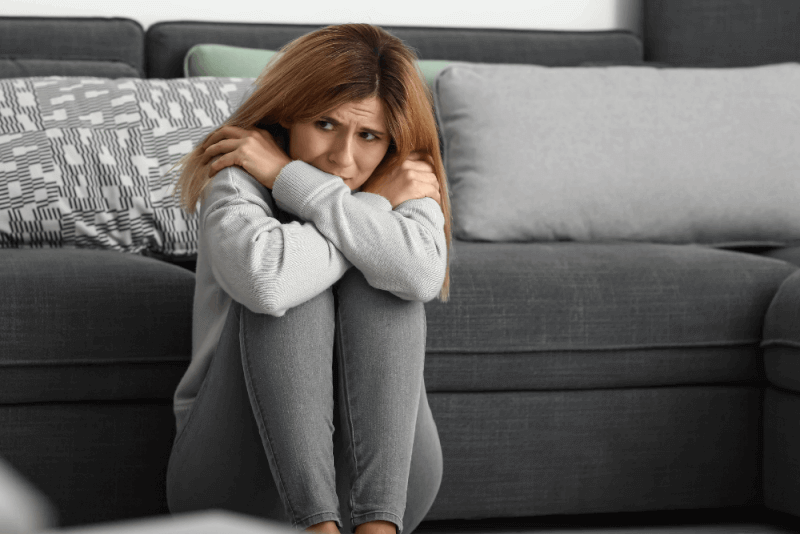What is Panic Disorder?
Panic disorder is an anxiety disorder characterized by unexpected and recurrent panic attacks. The most characteristic feature of panic disorder is that it occurs without any warning. The symptoms caused by panic disorder do not result from any mental or physical health issues. Generally, there is no trigger for panic attacks. Not everyone who experiences panic attacks develops panic disorder.
Diagnosis Criteria for Panic Disorder
Mental health professionals diagnose panic disorder based on symptoms. To be diagnosed, one must experience more than 4 panic attacks and constantly fear having another panic attack.
Symptoms of Panic Disorder
Panic attacks can occur in other anxiety disorders as well. Generally, panic disorder is diagnosed in individuals who experience 4 or more panic attacks and constantly worry about having another. Symptoms of panic disorder may include:
- Increased heart rate
- Shaking
- Sweating
- Shortness of breath
- Feeling of choking
- Stomach pain
- Nausea
- Dizziness
- Feeling unreal or detached from oneself
- Fear of losing control
- Fear of going crazy or dying
- Numbness
- Chills or hot flashes
- Other symptoms that mimic a heart attack
Panic disorder can be distressing and debilitating. Panic attacks in individuals with panic disorder usually last a few minutes. However, in some cases, attacks can last for several hours.
Causes of Panic Disorder
Panic disorder is a common mental health issue. The first signs of panic disorder typically appear during adolescence, but some individuals do not experience initial symptoms until early adulthood. In some cases, panic disorder begins in childhood. Women are twice as likely as men to have panic disorder, and there appears to be a genetic connection.
Panic disorder is thought to be an exaggerated response of the body's normal survival instincts and behaviors. Therefore, one of the causes of panic disorder is believed to be sensitivity to hormones that trigger excited feelings.
Treatment of Panic Disorder
Psychotherapy and medication are used to treat panic disorder. In many cases, a combination of both methods is used. The duration of treatment depends on the severity of the condition and how well the patient responds to treatment.
Psychotherapy
Psychotherapy, also known as talk therapy, helps individuals with panic disorder identify and change unhealthy feelings and thoughts. Specific types of psychotherapy that can help with panic disorder include:
Cognitive Behavioral Therapy (CBT)
This type of therapy involves discussing thoughts and feelings with a licensed counselor or psychologist. The therapist helps identify triggers of panic attacks and works to change thoughts, behaviors, and reactions. As different responses to triggers are developed, the frequency of attacks decreases and may eventually stop.
Exposure Therapy
In this therapy, patients are gradually and repeatedly exposed to what triggers their attacks. The exposure can be imaginary or real. Over time, patients learn to feel comfortable in situations that previously caused anxiety. Relaxation techniques such as breathing exercises are also taught to manage anxiety during the process.
Medication for Panic Disorder
Medications that help control panic attacks in panic disorder include:
Antidepressants
Some antidepressants reduce the frequency of panic attacks, while others decrease the severity of attacks. Prescribed antidepressants may include selective serotonin reuptake inhibitors (SSRIs) or serotonin-norepinephrine reuptake inhibitors (SNRIs).
Anti-anxiety Medications
Benzodiazepines are commonly prescribed to treat and prevent panic attacks. While these medications help relieve anxiety, they have the potential for addiction and must be taken with caution.
What is Agoraphobia Panic Disorder?
Agoraphobia, a type of panic disorder, is a phobic condition where individuals avoid situations or places for fear of being unable to escape or get help if a panic attack occurs. In the last half-century, agoraphobia has been closely linked to recurrent panic attack syndrome.
As a result, agoraphobia is often seen as a typical development or complication of panic disorder. Despite its high prevalence alongside panic disorder, agoraphobia is often underrecognized and inadequately treated by specialists.
How Long Do Panic Attacks Last in Panic Disorder?
Most panic attacks last between 5 and 20 minutes, though some can exceed an hour. The frequency and severity of attacks vary depending on the patient's condition. Therefore, some individuals may experience one or two attacks per month, while others may have several attacks per week.
What is the Difference Between Anxiety and Panic Attacks?
The main difference between anxiety attacks and panic attacks is that anxiety attacks are triggered by specific stressors and gradually increase, whereas symptoms in individuals with panic disorder occur suddenly. People with anxiety often experience symptoms like stomach knots or increased heart rate, which are less intense but last longer than the brief, intense symptoms of panic attacks.
Difference Between Panic Attacks and Panic Disorder
Almost everyone experiences a panic attack once or twice in their lifetime. However, panic disorder is diagnosed when an individual has 4 or more panic attacks and develops an expectation of having another attack. While panic attacks are not considered a mental illness, panic disorder is classified as a mental illness.







